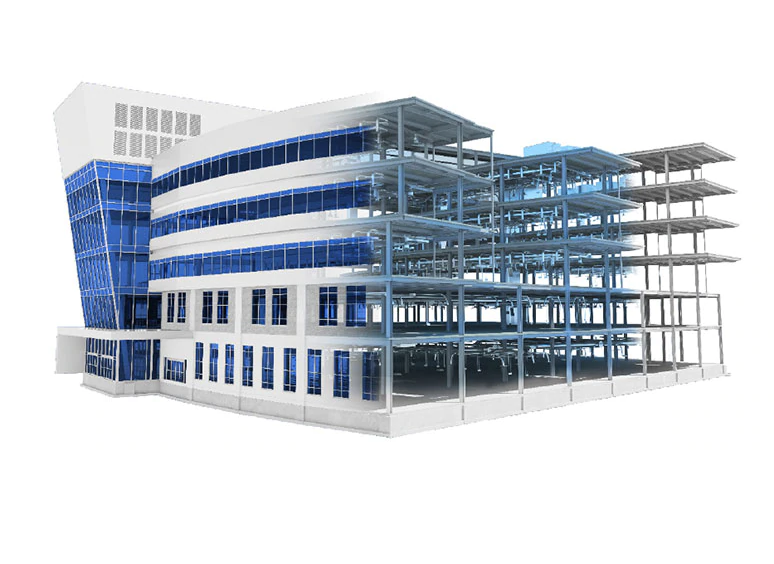Building Information Modeling has become an indispensable tool in the architecture, engineering, and construction industry, revolutionizing the way buildings and infrastructure projects are designed, constructed, and managed. In recent years, BIM technology has evolved rapidly, and its applications continue to expand. In the realm of structural engineering, BIM services are poised to undergo significant transformations driven by emerging trends and innovative technologies. Let’s delve into the future trends and innovations shaping the landscape of structural BIM services.
Integration of Generative Design
One of the most promising trends in structural BIM is the integration of generative design techniques. Generative design uses algorithms and AI to explore numerous design options based on specified criteria and constraints. In structural engineering, this means creating optimized designs that maximize strength while minimizing material usage and construction costs. BIM platforms will increasingly incorporate generative design tools, allowing engineers to explore innovative structural solutions efficiently.
Advanced Simulation and Analysis
Future Structural BIM services will rely heavily on advanced simulation and analysis capabilities. Real-time structural analysis within BIM environments will enable engineers to evaluate the performance of designs under various loads and conditions instantly. This integration of analysis into BIM platforms will facilitate more informed decision-making, leading to safer and more efficient structural designs.
IoT and Sensor Integration
The Internet of Things (IoT) is poised to transform the way buildings are constructed and managed. In structural BIM, IoT sensors can be embedded into buildings during construction, providing real-time data on structural behavior, occupancy patterns, and environmental conditions. This data can be fed back into the BIM model, enabling predictive maintenance, performance optimization, and even adaptive building design.
Collaborative Workflows and Cloud-Based Platforms
Collaboration is key in modern construction projects, and BIM facilitates enhanced coordination among multidisciplinary teams. Future trends involve the adoption of cloud-based BIM platforms that enable seamless collaboration and information sharing in real time. This allows stakeholders to work concurrently on the same model, reducing errors, minimizing rework, and improving project efficiency.
Augmented and Virtual Reality
Augmented Reality and Virtual Reality technologies are revolutionizing how stakeholders interact with BIM models. In the future, engineers will use AR/VR to visualize and manipulate 3D models in real-world contexts, facilitating better spatial understanding and decision-making. This immersive experience will streamline the design review process and enhance communication among project teams.
Prefabrication and Modular Construction
The rise of prefabrication and modular construction methods is another significant trend in structural engineering. BIM plays a crucial role in these processes by enabling off-site manufacturing of building components based on precise digital models. This approach enhances construction efficiency, reduces waste, and improves quality control.
Machine Learning for Design Optimization
Machine learning algorithms are increasingly being applied to optimize structural designs based on historical data and performance feedback. By analyzing vast amounts of data, ML can identify patterns and generate design alternatives that meet specific criteria such as cost, sustainability, and structural integrity. This technology will be integrated into BIM workflows to automate and enhance the design process.
Sustainability and Green Building Practices
The focus on sustainability is driving innovations in structural BIM services. Future BIM platforms will incorporate tools for energy analysis, life cycle assessment, and environmental impact evaluation. Engineers will be able to design structures that minimize resource consumption, reduce carbon footprint, and meet stringent green building standards.
Blockchain for Project Management and Documentation
Blockchain technology offers secure and transparent ways to manage project documentation, contracts, and transactions. In structural BIM services, blockchain can ensure data integrity, traceability, and accountability throughout the project lifecycle. Smart contracts powered by blockchain can automate payments based on project milestones, fostering trust and efficiency in construction projects.
AI-Powered Automation
Lastly, artificial intelligence will play an increasingly vital role in automating repetitive tasks in structural BIM services. AI algorithms can automate model generation, clash detection, quantity takeoff, and construction scheduling, freeing up engineers to focus on higher-level design tasks and decision-making.
Conclusion
The future of structural BIM services is bright with exciting advancements and innovations. From generative design and advanced simulations to IoT integration and AI-powered automation, these trends are reshaping the way structural engineers design and construct buildings. Embracing these technologies will not only improve project outcomes but also drive sustainability, efficiency, and collaboration across the AEC industry. As these trends continue to evolve, structural BIM services will undoubtedly play a pivotal role in shaping the cities and infrastructure of tomorrow.

